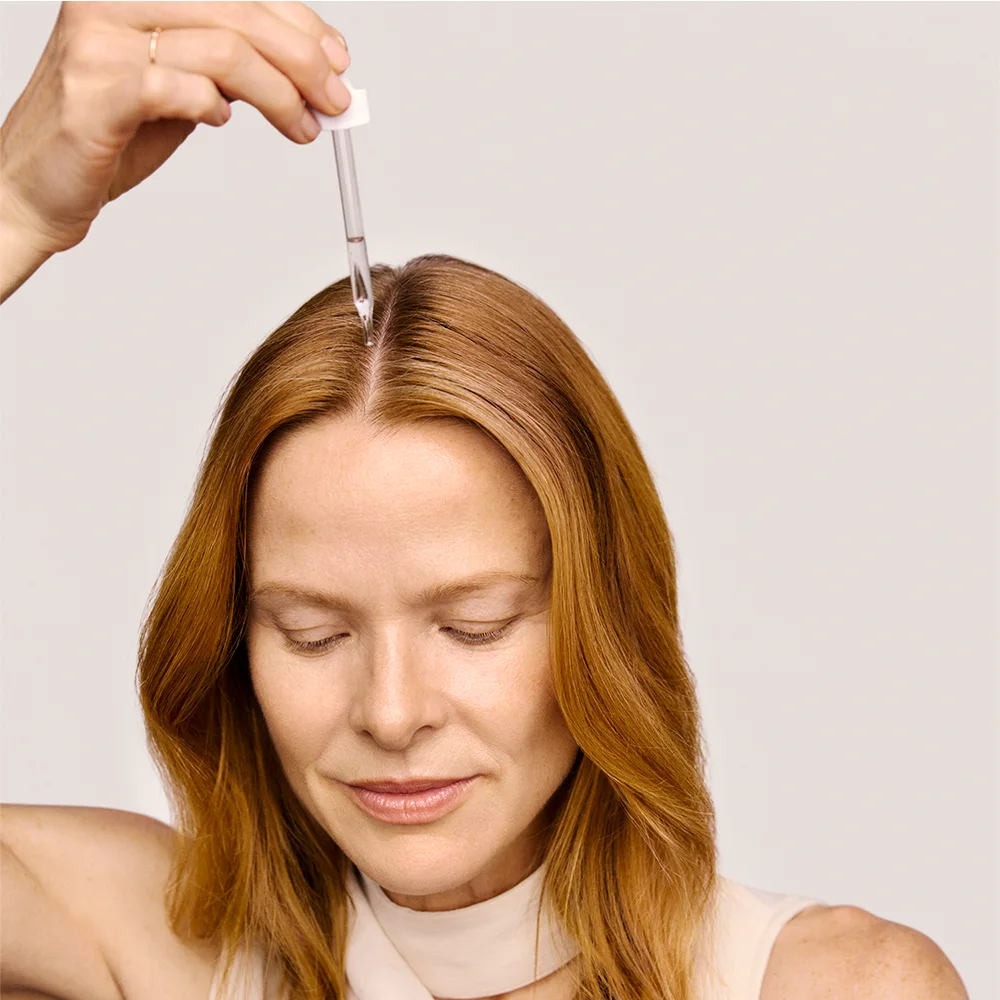Here's what we'll cover
Here's what we'll cover
Here's what we'll cover
Many pregnant women notice that their hair thickens during pregnancy. What they may not know is they can lose some of that hair after giving birth.
After pregnancy, the first sign of hair loss is bigger clumps of hair in the shower or on your hairbrush. When this happens, it’s important not to panic. Continue reading to find out more about why postpartum hair loss (alopecia) occurs––and how long it lasts.
What is postpartum hair loss?
Postpartum hair loss is a type of stress-induced hair loss caused by changes in hormone levels.
Approximately 40–50% of women are affected by this after giving birth. According to the American Academy of Dermatology, this type of hair loss is referred to as excessive shedding rather than true hair loss. The good news is that means you won’t get bald spots or experience permanent hair loss (AAD, n.d.).
What causes postpartum hair loss?
As any woman who’s had a baby knows, pregnancy changes the balance of hormones in the body. Levels of hormones like estrogen, progesterone, and prolactin are higher during pregnancy, and rapidly drop after the baby is born (although prolactin may stay elevated if you’re breastfeeding).
This fluctuation in hormones can lead to postpartum hair loss, which can be distressing for new mothers. The process behind postpartum hair loss isn’t entirely understood, but there is a clear relationship between the hormones estrogen and progesterone and the hair growth cycle.
At any one time, roughly 90% of your hair is in what’s called the active growing phase, which lasts for 2–6 years. Hairs then enter a transition phase for 1–2 weeks before entering a final resting phase. The resting phase lasts from 2–4 months, and at the end, hair starts falling out. Once the hair drops off, follicles return to the growth phase and begin all over again (Phillips, 2017, Murphrey, 2020).
Higher hormone levels keep hair follicles in the growth phase longer during pregnancy, so you’re not losing as much hair as you normally would. Following childbirth, hormones drop and all those hair follicles in the extended growth phase enter the resting phase and fall out all at once. Basically, all of the hairs that would have fallen out if you weren’t pregnant fall out after the baby is born.
How long does postpartum hair loss last?
Fortunately, this type of excessive shedding is temporary and your hair will go back to normal within 4–6 months after giving birth. Most women will be back to a full head of healthy hair by the time their new baby celebrates their first birthday, if not sooner (AAD, n.d.).
If your hair is still thinning, you can discuss it with a healthcare provider. Many factors can cause alopecia, including thyroid disease, iron-deficiency anemia, stress, diet, medication, and certain hair care habits (Phillips, 2017; Ho, 2021).
Treatment options and prevention
There are no clinically proven treatments for postpartum alopecia. The good news is, it usually resolves on its own. Since postpartum hair loss is tied to natural changes in hormone levels after pregnancy, there’s unfortunately no way to prevent it.
However, some women have a slower recovery of their regular hair cycle. If your hair loss is bothersome, here are some tips that may help (AAD, n.d.):
Avoid excess brushing or styling, especially with appliances that emit high heat
Take advantage of volumizing shampoos
Avoid intensive conditioning shampoos
Experiment with hairstyles that make your locks look fuller
Other things that could boost hair recovery time include keeping up with prenatal vitamins after childbirth and eating a healthy diet rich in fruits and vegetables.
DISCLAIMER
If you have any medical questions or concerns, please talk to your healthcare provider. The articles on Health Guide are underpinned by peer-reviewed research and information drawn from medical societies and governmental agencies. However, they are not a substitute for professional medical advice, diagnosis, or treatment.
References
American Academy of Dermatology (ADA) - Hair Loss in New Moms. Retrieved Oct. 15, 2019 from https://www.aad.org/new-moms#
American Academy of Dermatology (ADA) - Hair Styling Without Damage. Retrieved Oct. 15, 2019 from https://www.aad.org/styling-without-damage
American Pregnancy Association (APA) - Hair Loss During Pregnancy. (2019, November 8). Retrieved from https://americanpregnancy.org/pregnancy-health/hair-loss-during-pregnancy/
Ho, C., Sood, T., & Zito, P. (2021). Androgenetic Alopecia. [Updated Aug 11, 2021]. In: StatPearls [Internet]. Retrieved from https://pubmed.ncbi.nlm.nih.gov/28613674/
Murphrey, M.B., Agarwal, S., Zito, P. M. (2020) Anatomy, hair. In: StatPearls [Internet]. Treasure Island (FL): StatPearls Publishing; 2021 Jan-. Retrieved from https://www.ncbi.nlm.nih.gov/books/NBK513312/ .
Phillips, T. G., Slomiany, W. P., & Allison, R. (2017). Hair Loss: Common Causes and Treatment. American Family Physician , 96 (6), 371–378. Retrieved from https://www.aafp.org/afp/2017/0915/p371.html












